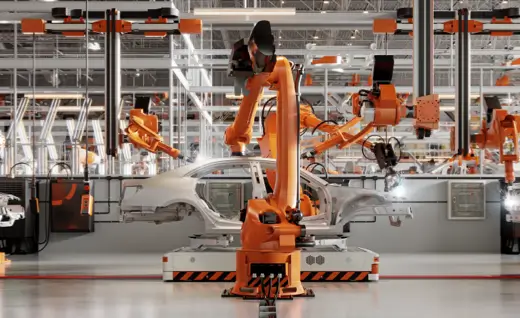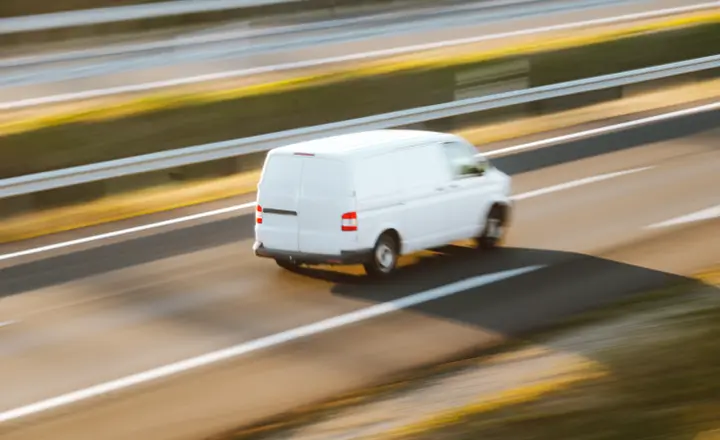The automotive industry's foundation rests on a massive, intricate supply chain that demands absolute precision…
January 31, 2022
Two changes to your customs procedures you need to know about now
It’s been over a year since the end of the Brexit transition period, and 2022 has brought with it the start of a new phase of customs declaration procedures. On 1 January 2022, HMRC introduced full customs checks in respect of goods being imported into the UK from the EU. Read more below about what’s changed and how these changes could affect your critical logistics.

Up until January 2022, an easement period has been in place for customs, allowing businesses to delay the full customs clearance on the import of non-controlled goods into the UK. Many businesses took full advantage of these easements to maintain a smooth transition across our borders, however, this next phase will mean getting to grips with a new border operation, with further border controls on their way later this year. Here’s a bit more detail about what these changes are and how they could affect you.
How will new border controls and road checks work after January 2022?
From January 2022, new customs checks mean that the hard border between the EU is almost complete. Ports and other border locations are now required to control goods moving between the EU and the UK, and vice-versa. What this means is that unless goods have a valid declaration, and have received customs clearance, they cannot be released. In most cases, this means goods will not now leave the port until all clearances have been granted.
Since 1 January 2021, traders have been able to move goods between the UK and EU without incurring customs duty, provided they can demonstrate that goods are of UK or EU origin. However, from 1 January 2022, they must hold supplier declarations to support their declaration of origin, at the time they export the goods.
In addition to the existing border requirements, a Goods Movement Reference (GMR) is now mandatory for all UK to EU and EU to UK transports, including empty vehicles. Before travel, hauliers entering via ports need to complete their GMRs using the Goods Vehicle Movement Service (GVMS). This will require both a Government Gateway User ID and a GB EORI number.
What does the end of delayed customs declarations (CFSP) mean for me?
As another temporary easement measure after Brexit, HMRC also allowed a 175-day delay in submitting customs declarations. From 1 January 2022 however, businesses will no longer be allowed to defer the completion of their customs declarations.
Businesses exporting goods from the EU to UK will have to make full customs declarations and be able to prove the origin of the items they are exporting to UK, at the point that the goods enter the UK
Any customs duty and import VAT due must also be paid at the time of customs clearance. The only exception is if the importer has arrangements in place to pay them through duty deferment, or via postponed VAT accounting, before the goods are made available to the importer.
What do I do if I need help navigating the new customs border requirements on EU imports?
Here’s how Carousel can help remove the struggle of customs imports throughout January 2022 and beyond – from expert customs support to streamlined returns management that keeps goods flowing in both directions with minimal disruption:
Our authorised consignee/consignor facilities allow us to declare YOUR goods WITHOUT presenting them at a customs office.
We print the transit-accompanying document, and (where applicable) the list of items, at our Birmingham service centre and remove goods under customs control directly from our authorised location. This reduces the risk of any delay, meaning our clients’ end customers receive the freight in the right place at the right time.
We have inland temporary storage facilities at our Birmingham service centre operation.
This means we can store your imported goods, temporarily under customs control, before we:
- release them into free circulation
- export them outside the UK
- Or place them under a customs special procedure.
As goods are not required to go into a customs office, this is another example of how we reduce delays in your supply chain.
We offer end-to-end transit via NCTS.
NCTS is a New Computerised Transit System and a system which allows us to electronically process Common Transit declarations. The NCTS will process the declaration and control the transit movement. It is used by the UK, all EU member states, and the signatories of the Common Transit Convention. This system keeps our clients’ freight moving, avoiding again any unnecessary delays.
We also offer full Customs Freight Simplified Procedure (CFSP) authorisation to support with supplementary declarations.
Using our CFSP, we can submit customs entries within the required reference period of the goods arriving. This simplified procedure de-risks the import process, as less information is required at point of entry and a full declaration can be submitted once goods have been landed and delivered.
Many of the changes initiated from 1 January 2022 are at the UK’s ports. In our unique position, we can clear the port as a true intermediary and not just inventory-controlled freight. As the vehicle does not have to transit through an inventory-controlled shed, this also reduces any delays and ensures freight keeps flowing as it should.
We are working with the Trader Dress Rehearsal (TDR) team to ensure a seamless migration from CHIEF to CDS.
HMRC’s technology platform, (used for recording the inbound and outbound movement of goods by land, sea and air) called CHIEF (Customs Handling of Import and Export Freight) will be phased out over the next 15 months. This means that from 1 September 2022 all import entries will have to be lodged to CDS (Customs Declaration Service) and from 1 March 2023 all export entries will also have to be lodged using CDS. We can help ensure a seamless transition, avoid the need for delays and ensure compliance is guaranteed.
Need help with your UK custom imports? Get in touch!
Our Brexit Action Team is made up of experts from across our European operations and can work with you and your business to resolve any supply chain challenges through these changes.
If you need some extra support or help, then come and talk to us, we are always happy to help. Simply contact us here.
Information correct at the time of publishing.


